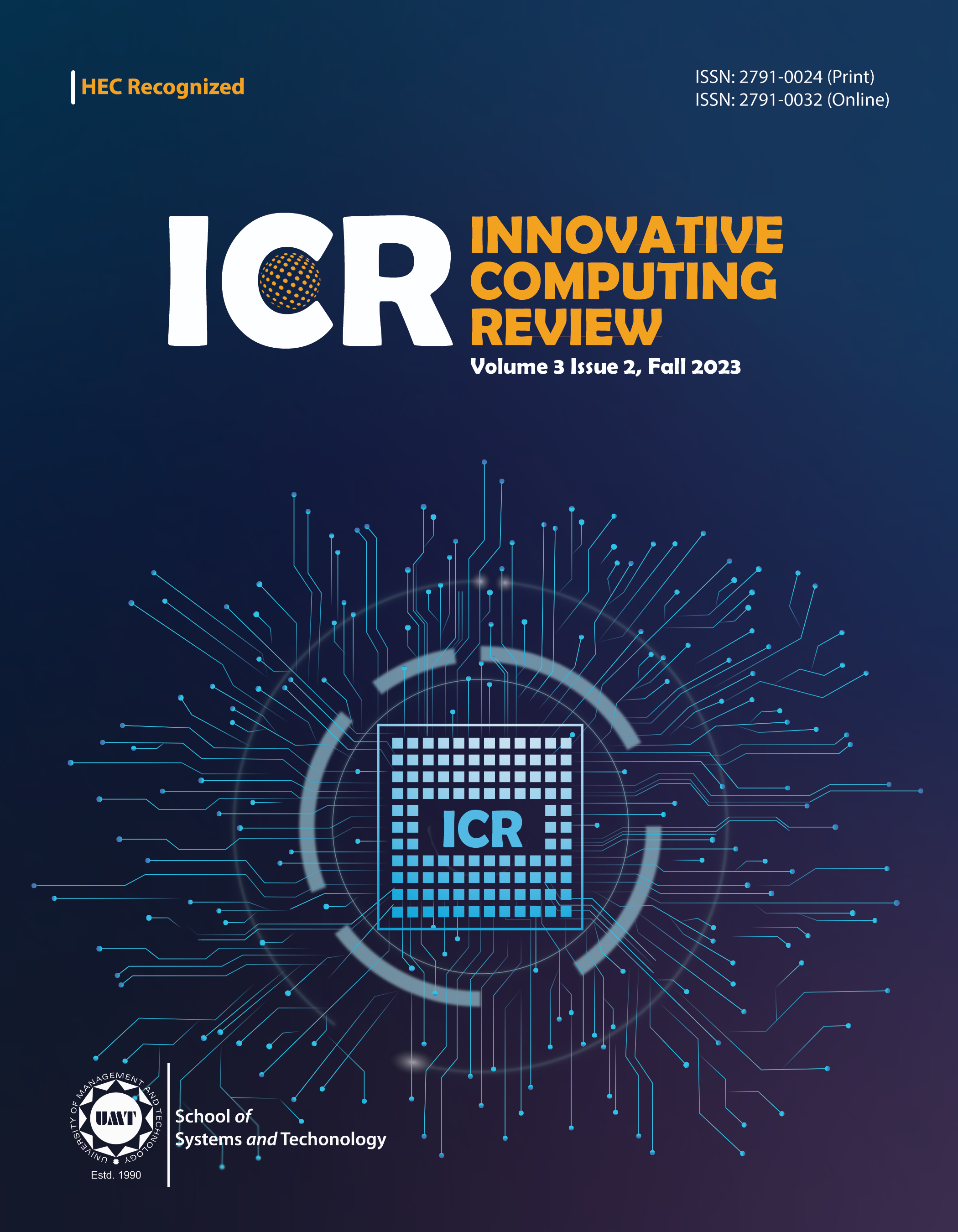Textual vs Visual Representation- Role of Aesthetics in Human Cognition and Perception
Abstract
 Abstract Views: 0
Abstract Views: 0
Visual representation is better as compared to textual representation in every aspect, either for a code or for the design of a software product. Writing a code using different programming languages in textual form is quite difficult as compared to a visual representation of code. The current study proved this phenomenon by presenting different codes in three different representations. These representations include textual, algorithm,
and flow graph. On the basis of observation and analysis of the current study, these three representations were examined. It was concluded that visual representation is the best way to present a code according to many parameters. These results are helpful in the recent switch towards low programming from high programming. Moreover, further research can be conducted on how large enterprise applications code can be created by using visual programming languages.
Downloads
References
K. Cherry. “Left brain vs. right brain dominance.” Verywellmind.com. https://www.verywellmind.com/left-brain-vs-right-brain-2795005 (updated May, 2023).
R. Gillett. “Why we’re more likely to remember content with images and video (Infographic).” Fastcompany.com. https://www.fastcompany.com/3035856/why-were-more-likely-to-remember-content-with-images-and-video-infogr (updated Sep. 2018.
R. R. Gajewski and E Smyrnova-Trybulska, “Algorithms, programming, flowcharts and flowgorithm,” in E-learn. Smart. Learn. Environ. Prep. New Gener. Special. 2018, pp. 393–408.
Wikipedia. “Visual programming language—Wikipedia, the free encyclopedia.” https://en.wikipedia.org/wiki/Visual_programming_language (accessed Jan. 12, 2020).
M. Homer and J. Noble, “Combining tiled and textual views of code,” in 2nd IEEE Work. Conf. Soft. Visualiz., 2014, pp. 1–10, Sep. 2014, doi: https://doi.org/10.1109/VISSOFT.2014.11
C. M. Freitas, P. R. Luzzardi, R. A. Cava, M. Winckler, M. S. Pimenta, and L. P. Nedel, “On evaluating information visualization techniques,” Acad. Med., pp. 373–374, 2002, doi: https://doi.org/10.1145/1556262.1556 326
Z. Sharafi, A. Marchetto, A. Susi, G. Antoniol, and Y.-G. Guéhéneuc, “An empirical study on the efficiency of graphical vs. textual representations in requirements comprehension” in 21st Int. Conf. Program. Comprehen., May 2013, pp. 33–42, doi: https://doi.org/10.1109/ICPC.2013.66 13831
M. Rester et al., “Assessing the usability of an interactive information visualization method as the first step of a sustainable evaluation,” in Usabil. Symp. Empower Soft. Qual. How can Usabil. Eng. Reach these goals? 2005, pp. 31–44.
N. H. Lurie and C. H. Mason, “Visual representation: Implications for decision making,” J. Mark., vol. 71, no. 1, pp. 160–177, 2007, doi: https://doi.org/10.1509/jmkg.71.1.160
M. Obrist et al., “Touch, taste, & smell user interfaces: In the future multisensory HCI,” in Proc. 2016 CHI Conf. Extend. Abstrat. Human Fact. Comput. Syst., 2016, pp. 3285–3292, doi: https://doi.org/10.1145/2851581.2856 462
L. Tomov, “The role of aesthetics in software design, development and education,” presented at 12th Ann. Int. Conf. Comput. Sci. Educ. Comput. Sci., Fulda, Germany, July 4–7, 2016.
S.-W. Lin, L. Y.-S. Lo, and T. K. Huang, “Visual complexity and figure-background color contrast of e-commerce websites: Effects on con-sumers’ emotional responses” in 49th Hawaii Int. Conf. Syst. Sci., 2016, pp. 3594–3603, doi: https://doi.org/10.1109/HICSS.2016.4 49
C. Henning and R. Ewerth, “Estimating the information gap between textual and visual representations,” Int. J. Multimedia Inf. Retrieval, vol. 7, no. 1, pp. 43–56, 2018, doi: https://doi.org/10.1007/s13735-017- 0142-y
C. Y. Tsai, “Improving students’ understanding of basic programming concepts through visual programming language: The role of self-efficacy,” Comput. Hum. Behav., vol. 95, 224– 232, June 2019, doi: https://doi.org/10.1016/j.chb.2018.11. 038
S. M. Salleh, Z. Shukur, and H. M. Judi, “Analysis of research in programming teaching tools: An initial review,” Procedia Soc. Behav. Sci., vol. 103, pp. 127–135, Nov. 2013. https://doi.org/10.1016/j.sbspro.2013. 10.317
S. Scalabrino, G. Bavota, C. Vendome, M. Linares-Vásquez, D. Poshyvanyk, and R. Oliveto, “Automatically assessing code understandability,” IEEE Trans. Softw. Eng., vol. 47, no. 3, pp. 595–613, Mar. 2021, doi: https://doi.org/10.1109/TSE.2019.290 1468
P. Dewan, “Words versus pictures: Leveraging the research on visual communication,” Partnership Can. J. Libr. Inf. Pract. Res., vol. 10, no. 1, 2015, doi: https://doi.org/10.21083/partnership.v10i1.3137
J. M. Carroll, Ed., HCI Models, Theories, and Frameworks: Toward a Multidisciplinary Science. Elsevier, 2003.
M. Tauqeer et al., “Driver’s emotion and behavior classification system based on internet of things and deep learning for advanced driver assistance system,” Comput. Commun., vol. 194, pp. 258–267, Oct. 2022, doi:
https://doi.org/10.1016/j.comcom.2022.07.031
A. Adams, P. Lunt, and P. Cairns, “A qualititative approach to HCI research,” in Research Methods for Human-Computer Interaction, P. Cairns and A. Cox, Eds. Cambridge, UK: Cambridge University Press, 2008, pp. 138–157.
N. Dell and N. Kumar, “The ins and outs of HCI for development” in Proc. 2016 CHI Conf. Human Fact. Comput. Syst., 2016, May, pp. 2220–2232, doi: https://doi.org/10.1145/2858036.2858081
D. Bau, J. Gray, C. Kelleher, J. Sheldon, and F. Turbak. Learnable programming: Blocks and beyond. Commun. ACM., vol. 60, no. 6, pp. 72–80, June 2017, doi: https://doi.org/10.1145/3015455
I. Benbasat, “HCI research: Future challenges and directions,” AIS Trans. Human-Computer Interact., vol. 2, no. 2, pp. 16–21, 2010, doi: https://doi.org/10.17705/1thci.00011
Copyright (c) 2023 Mariya Tauqeer, Shakeela Aslam, Iqra Rafique , Tauseef Rana, Halima Jamil

This work is licensed under a Creative Commons Attribution 4.0 International License.






